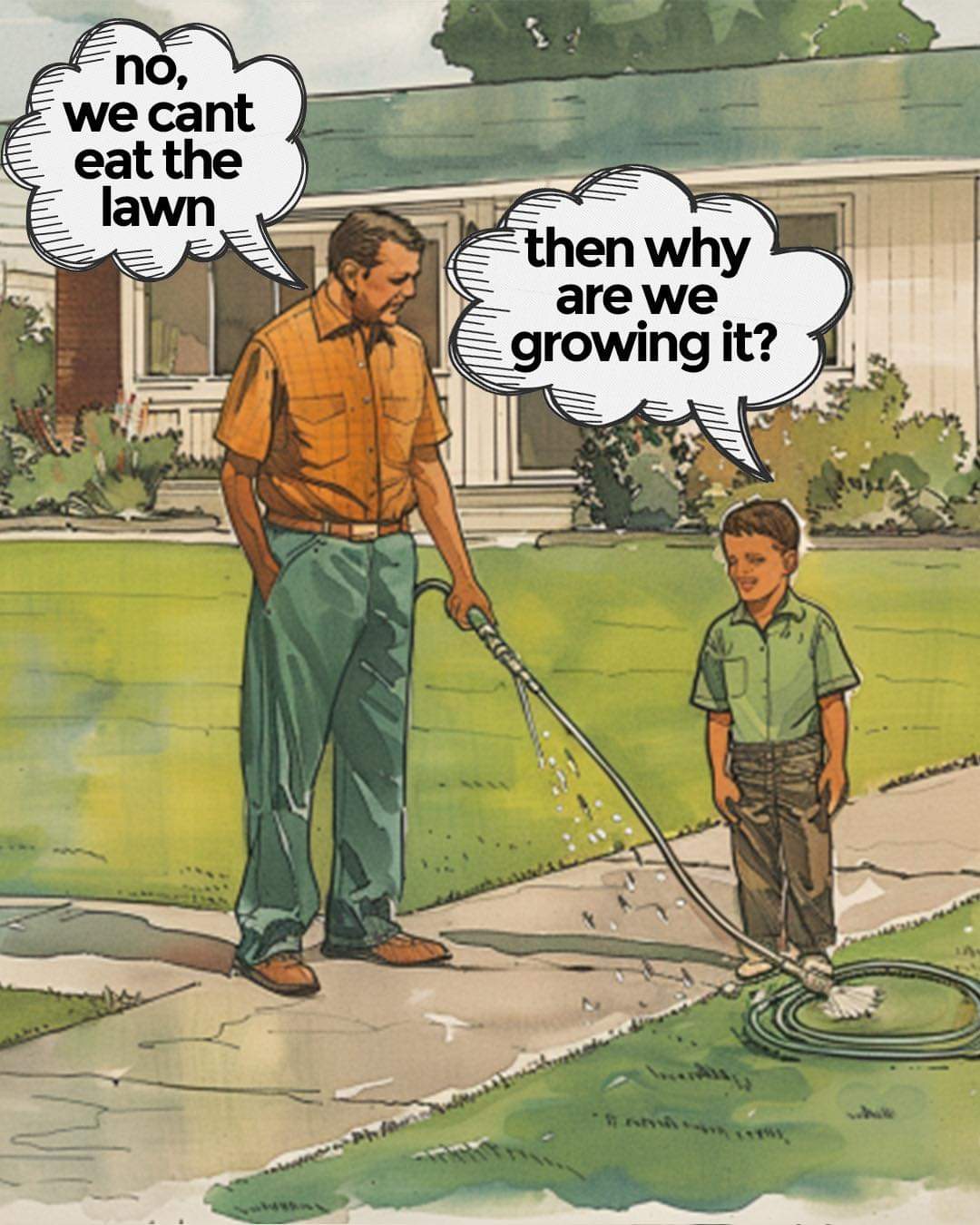this post was submitted on 10 Jul 2024
539 points (92.0% liked)
No Lawns
2011 readers
1 users here now
What is No Lawns?
A community devoted to alternatives to monoculture lawns, with an emphasis on native plants and conservation. Rain gardens, xeriscaping, strolling gardens, native plants, and much more! (from official Reddit r/NoLawns)
Have questions or don't know where to begin?
- You can check our website
- Or our Reddit wiki
- Our FAQ
- Resources by Country
- Resources by US State
- Doug Tallamy AMA
Where can you find the official No Lawns socials?
Rules
- Be Civil
- Don't dox yourself
- Stay on Topic
- Don't break instance or Lemmy rules
Related Communities
- NativePlantGardening - Mander
- NativePlantGardening - Sh.itJust.Works
- Composting - SlrPnk
- Nature and Gardening - Beehaw
- Reclamation - SlrPnk
founded 1 year ago
MODERATORS
you are viewing a single comment's thread
view the rest of the comments
view the rest of the comments

It's funny, my yard is essentially the community play ground. When I don't maintain it, the clover gets destroyed and it turns into a mud pit the kids can't play on really. Natural grasses didn't stand a chance even after being given the time to establish.
I consulted with a landscape architect who I was partnered with on an elementary school I was building looking for what I could do naturally to keep the yard in tact while the kids played..... this was a nationwide firm, on a LEED Gold project. Their answer? Grass. Rye grass, KBG and red fescue was the recommendation.
I nuked the lawn, soil and seeded it and two years later it's held up wonderfully and is enjoyed by a handful of families.
I planted Milk weed for the pollinators. They don't want most of the crap people plant trying to be Eco friendly anyways or so the landscape architect told me.
This anti lawn tirade is kinda anti-kid to a degree. When my kids are older and not using it every day, I'll tear it all out and hardscape it. I don't wanna maintain things for no purpose.
Keystone Plants by Ecoregion